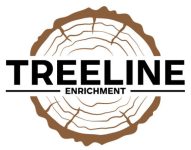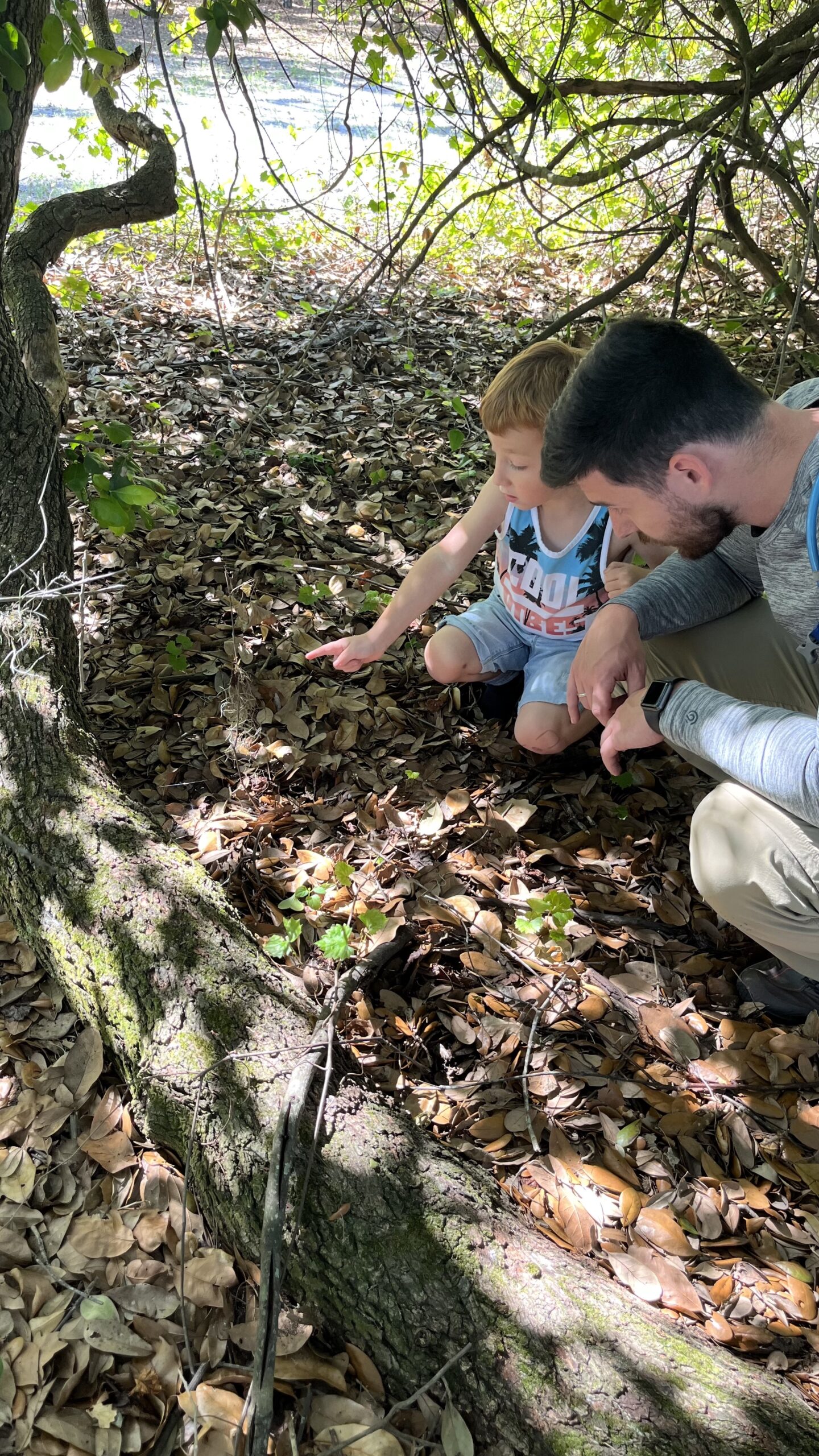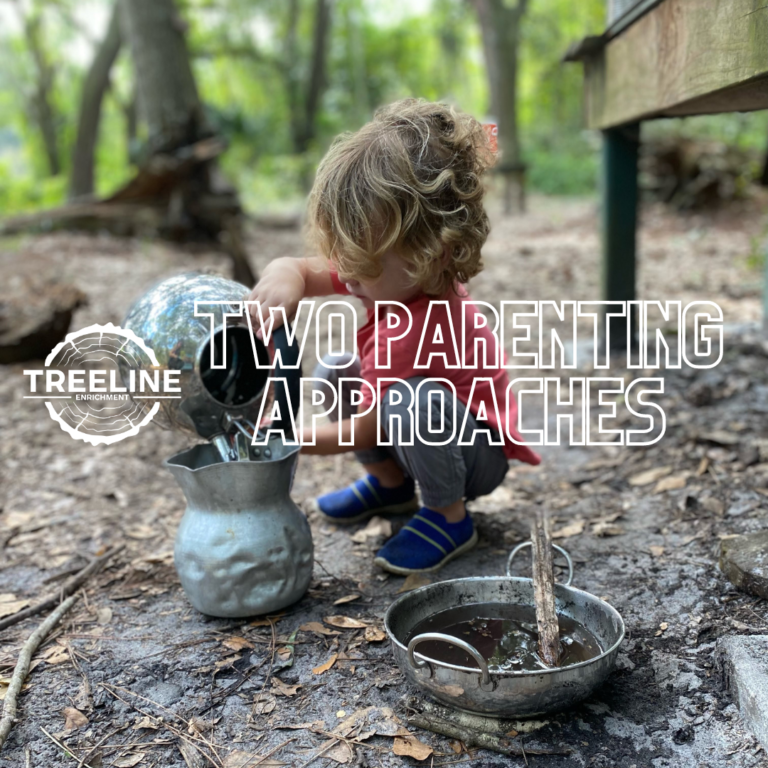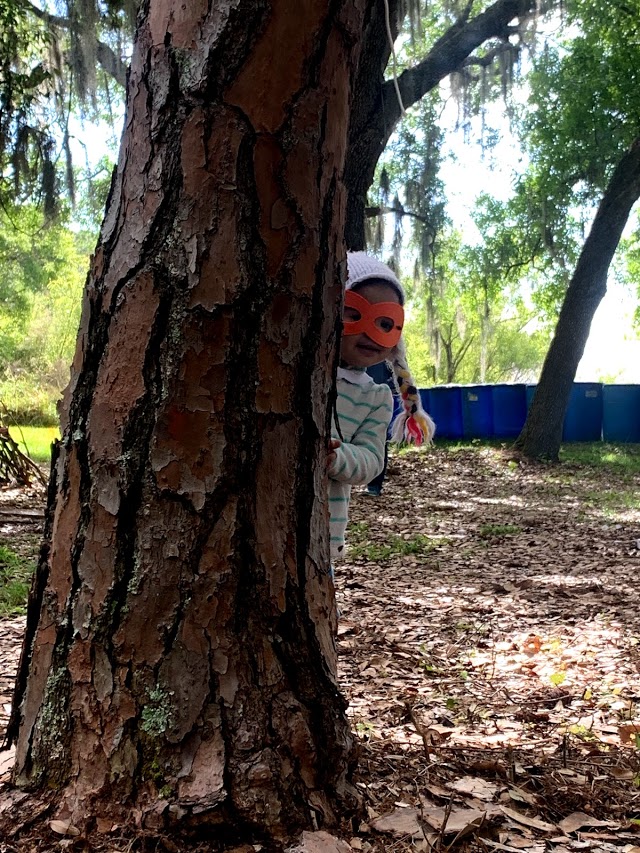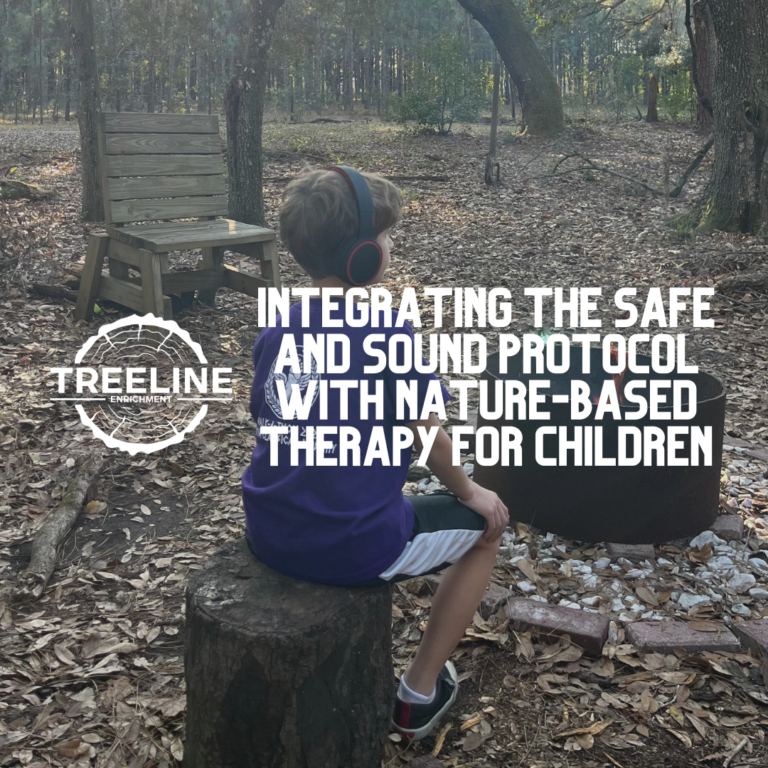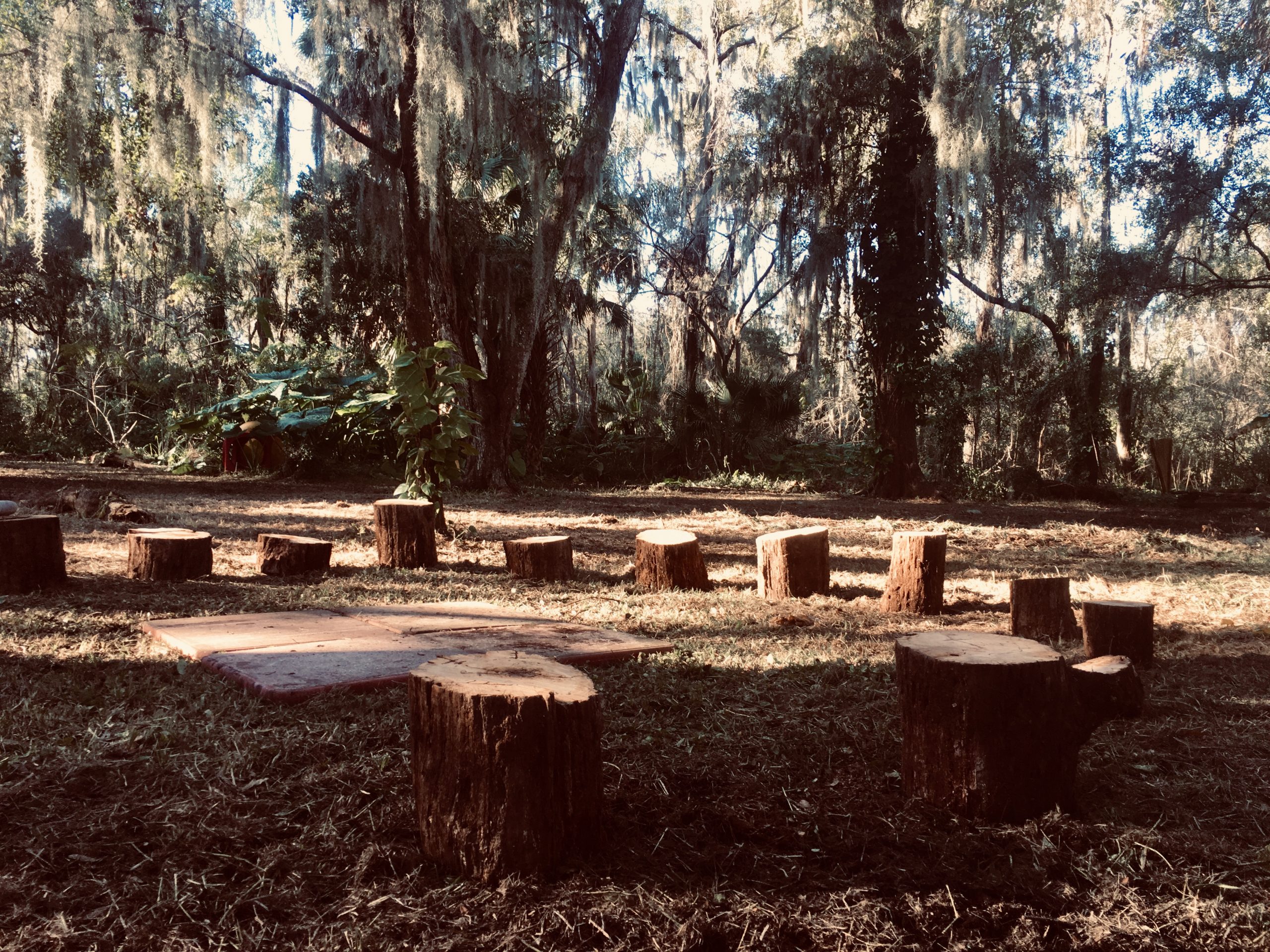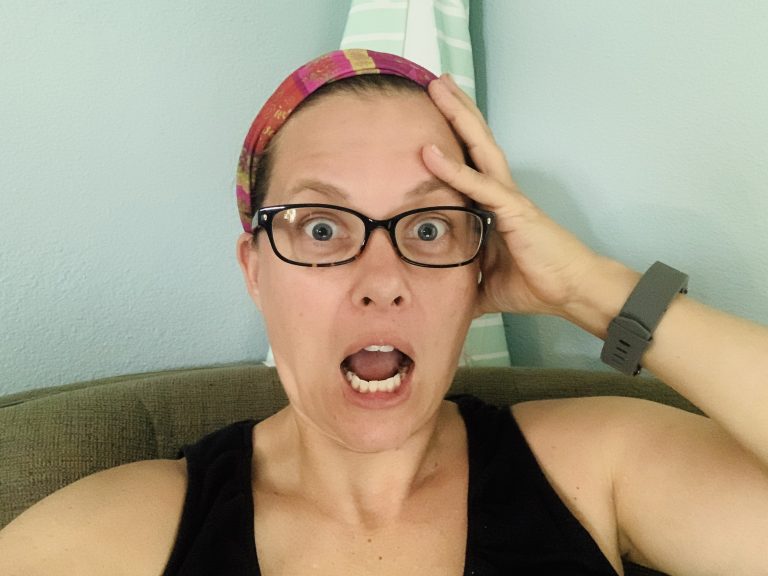OT Student Reflections
Student Reflections at Treeline from OT Student Sean Vercellone, St. Augustine University
I have always enjoyed spending time in nature. It is a place where I feel safe and most like myself. This fact shaped my career path and led me to work at a summer camp for kids and adults with disabilities. I loved this job! I lead activities like kayaking, tubing, and ziplining, while also building meaningful connections with so many unique kids and adults. Working at this camp for three summers changed my life. Not only did it lead to me applying to occupational therapy school, but it was the first time I witnessed the therapeutic benefits of nature.
Fast forward 3 years and I find myself completing my doctoral capstone project at Treeline Enrichment. The main goal of my project was to learn about outdoor accessibility. In order to do so I read a lot of research, interviewed amazing parents, and I got lots of experience working with kids in nature, as both a play guide and as an outdoor occupational therapist. Previously I had completed a 12-week fieldwork rotation in a pediatric outpatient clinic. I felt confident in my skills and wondered “how different nature-based therapy could really be?” Little did I know that I had a lot to learn. Thankfully I had amazing mentors and kids/clients that helped me grow. While there were many challenges along the way, the lessons I’ve learned have shaped who I am as a person and a future occupational therapist.
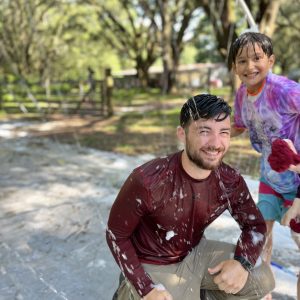
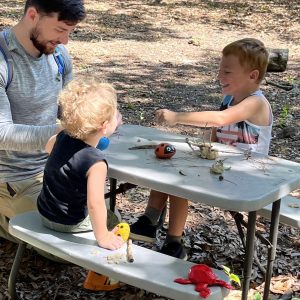
Lesson # 1: A stick is never just a stick
The first challenge I encountered almost immediately was learning how to partner with the natural environment. In a clinic, you have a closet full of games and toys at your disposal. If a kid wasn’t interested in the activity, it was easy to adjust. In nature, whatever you have in your backpack was all you had to work with …Or so I thought. Despite my previous experience in nature and my education as an occupational therapist I completely overlooked how to use all the natural elements around us.
🎣Who needs a baseball bat when you also have sticks that can double as a magic wand, a fishing pole, a hammer, and drumsticks?
🪵Why carry a bucket full of toys when you can make your own obstacle course, slingshots, 5-course meal, and secret hideout using the natural materials all around you?
Figuring out the many ways to use natural materials challenged my creativity, adaptability, and problem solving like never before. Consequently, when using these natural materials, the kids also demonstrated greater creativity, attention, and enjoyment in the sessions. Instead of playing a game with set instructions, they came up with their own. This process in and of itself was therapeutic, challenging their planning, communication, and problem-solving abilities. I still have a lot to learn about using nature as a co-facilitator in the therapy process but the adaptability and problem-solving skills I developed will benefit me as a therapist in the future.
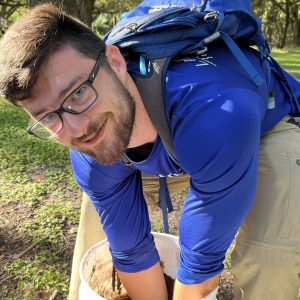
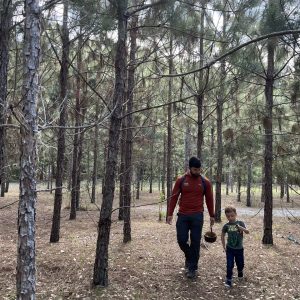
Lesson #2: Sometimes it’s better to be a follower
The second challenge I faced was being play-based and child-led. These are concepts that were introduced to me during my pediatric fieldwork but were sometimes difficult to translate outdoors. I remember one day a child was on a tree swing during a session and Angela (owner and lead therapist at Treeline) asked how I could shift this intervention into a game. I froze. Wasn’t the swing fun enough on its own? To my surprise, after by adding a play-ful game-like interaction to this vestibular intervention, the client’s enjoyment and therapy engagement increased tenfold. On top of that, this shift also supported a stronger connection, therapeutic relationship, and trust with the child.
Learning to turn even simple activities into play also helped me incorporate the child’s strengths into the sessions and be more responsive to the child’s interests. Initially, I tried to stick to my treatment plan and make only small modifications as needed. However, this approach often led to the child losing interest. Instead of making a step-by-step plan for sessions, I began to treatment plan based on the concepts I wanted to address. For example, If a child needed to work on fine motor skills and bilateral integration (using both sides of the body together), I packed supplies that supported these goals and then let the child’s interests and curiosities dictate the activities. I learned to be more flexible and integrate a child’s therapy needs and session goals into the child’s plans, rather than my own.
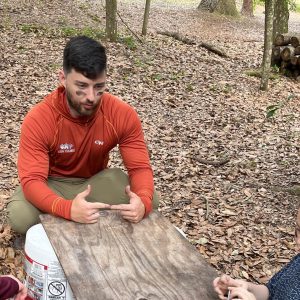
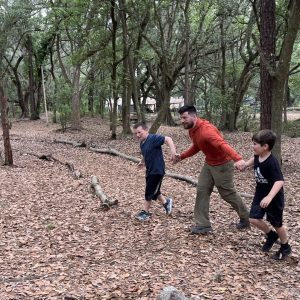
Lesson #3: More kids mean more opportunities
The third challenge I faced during my time at Treeline Enrichment was working with small therapy groups. In the clinic setting, I only worked with one child at a time. Plus, the woods is less predictable than a clinic. It was intimidating at first, but after a couple of weeks observing Angela and getting to know the kids, I was ready to facilitate my first therapy group.
Compared to an individual session, planning a group session is a unique challenge. I struggled to understand how each child’s goals could be incorporated into the same activity. Aspects of the activity that may be too easy for one kid, may be too challenging for another kid. Plus, each kid has different interests and ideas of how they want the group to go. Helping plan and run this group was one of the most challenging tasks I’ve had as a student. While everything didn’t go as planned, I learned a lot of strategies that will help me in the future.
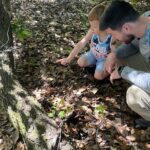
Strategy 1: Always give directions in multiple ways.
Sometimes it’s easy to forget that kids don’t always process verbal directions as well as visual directions. What made clear sense in my head may have just confused the whole group. In the future, I will pair verbal directions with visual directions and an example.
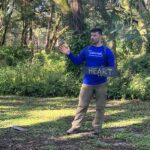
Strategy 2: Don’t rush the group’s planning process.
As a student, I was so excited to get into an activity that I rushed things, like establishing guidelines and expectations. This process is incredibly valuable for kids. It holds space for kids to work on expressing ideas, resolve conflicts, and understand other people’s viewpoints. There will likely be disagreements and someone might not get their way. That’s okay! The skills kids develop during this planning stage (impulse control, emotional regulation, problem solving, and listening to others) are exactly why these therapy groups are so meaningful.
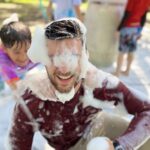
Strategy 3: You don’t have to do everything.
This strategy applies to both therapists and kids. As a therapist it was important for me to remember that I had help. At Treeline, all therapy groups are staffed with at least 2 adults. Being able to instruct and guide the other adults in the group can be the difference between chaos and a well-run activity. For kids, I learned that it’s ok if a child didn’t want to participate in a group activity or if their participation looked different than someone else’s participation.
Overall, my experience with small group therapy sessions outdoors was amazing. While there were challenges along the way, there were also a lot of opportunities for growth.
Future Plans
After completing my project at Treeline Enrichment, I look forward to graduating and working in the pediatric field. I am thankful for the professional growth I have made during this 3-month project. Whether I am in the woods, a clinic, a hospital, or a school the lessons I learned at Treeline will guide my actions and values as a future occupational therapist.
